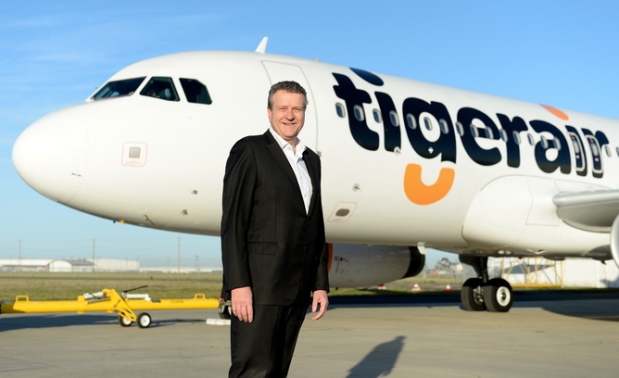
The corporate regulator’s approval of Virgin Australia’s 60% stake in fledgling low-cost carrier Tigerair (formerly known as Tiger Airways) marks the Australian aviation industry’s return to an effective airline duopoly.
Up until 1990, Australia’s domestic airline services were dominated by a government-approved duopoly of Ansett and Australian Airlines. This two-airline system resulted in both airlines offering similar timetables, similar routes, and high airfares. In 1990, the Hawke government approved the industry’s regulation, which was intended to stimulate competition and reduce domestic airfares.
But should we be concerned about the affect Virgin’s acquisition of Tiger will have on competition in the industry? Although domestic aviation ownership in Australia is dominated by the Qantas Group (through control of Qantas, Qantaslink and Jetstar) and Virgin Australia (through Virgin Blue, Tigerair, and Skywest), the climate is far more varied and competitive. Australia’s two-airline model of 2013 involves few owners controlling multiple brands, appealing to different sectors of the market.
For many domestic airlines, deregulation presented many challenges, particularly amid the high costs and low yields of operating in the Australian market. The story of Australia’s domestic aviation market after 1990 features a number of casualties: Compass Mark 1 and 2, Impulse Air, the Ansett collapse in 2001 and the Air Australia collapse in 2011.
Virgin’s investment in Tiger has almost certainly saved it from being another failure. Tiger was owned by Singapore Airlines when it was established in Australia in 2007. (Singapore Airlines retains its financial share in Tiger.) Tiger sought to establish itself in the growing low-cost carrier segment of the Australian market, but increasing competition from incumbents Virgin and Jetstar resulted in financial losses.
Successful domestic airline companies in Australia need deep pockets. The high cost of fuel, wages and capital equipment, coupled with the market pressure for low fares, requires a high turnover and full planes. Apart from capital-city routes and popular holiday destinations such as the Gold Coast, Sunshine Coast and Cairns in Queensland and secondary leisure destinations including Launceston, Alice Springs, Uluru, Broome and the key north Queensland holiday destinations, the number of domestic airline routes that can sustain more than two carriers is limited.
The move also conforms with a global trend of acquisitions, mergers and multi-branding in the aviation industry. The merger between giant US carriers Continental and United in 2010 and the 2004 merger of two major European carriers KLM (Royal Dutch Airways)and Air France, which continue to fly as separate brands, are two notable examples. The multi-brand model, which has been employed by both the Qantas and Virgin groups, enables them to appeal to the broadest possible passenger market.
Branding has been something of a bugbear for Tiger. The airline sought to increase its consumer profile by sponsoring the Channel 7 reality TV series Air Ways in 2009-10, but the numerous negative stories about the airline and accusations of sub-standard service on that series hurt the carrier’s reputation. In 2011, Tiger’s reputation was further undermined when the carrier was grounded for an alleged failure to comply with Australia’s strict civil aviation safety and maintenance regulations.
Tiger’s survival required new management and re-branding. Virgin’s investment in the carrier is no act of charity. Since John Borghetti’s appointment as CEO of Virgin’s Australian operation in 2010, he has, with support from Virgin’s global chairman Richard Branson, re-positioned Virgin Australia from a classic low-cost carrier to a hybrid domestic and international carrier pitched at both the budget and the business market, a niche it has carved for itself with considerable success.
The acquisition, rebranding and fleet expansion of Tiger into Tigerair is an ideal fit for Virgin’s strategy to become a multi-branded airline. Tigerair’s CEO, Rob Sharp, shared a similar strategic vision and will be retained as CEO although Virgin will exercise overall corporate control. Tigerair is planning to become a lean low-cost carrier able to compete with Jetstar in the Australian budget airline market.
Provided that passenger demand maintains growth, this virtual duopoly does not necessarily equal high air fares. Virgin’s stake in Tiger is expected to increase competition in Australia’s low-cost domestic aviation market. This is good news for consumers, but not so good for Qantas and Jetstar, which need to respond to the threat posed by a revitalised opponent.
The author
David Beirman
Senior Lecturer Tourism at University of Technology, Sydney
David Beirman is a senior lecturer in Tourism. He completed undergraduate and postgraduate degrees majoring in Sociology at the University of NSW.
David has had an extensive career in the Australian travel industry between 1981-2009 which has encompassed work with retail travel agencies, wholesale tour operators, destination marketing and management, human resource management and in-service industry training.
Prior to joining UTS as a full-time lecturer David had developed tourism courses and lectured part-time at UTS and other universities in tourism, marketing, Middle East studies and sociology.
His specialist areas of research are tourism risk, crisis and recovery management and destination marketing. He has been widely published in these fields. He has been invited as a keynote speaker in conferences all over the world and has provided crisis and recovery management consultation to governments and tourism businesses in Australia, Asia, Africa and North America.
He is the founder and National Secretary of the Eastern Mediterranean Tourism Association, an industry association which promotes fifteen countries between Italy and Jordan. David is also a member of the Smartraveller Advisory Group which is a travel industry leadership body appointed by Australian Department of Foreign Affairs and Trade to consult with DFAT on the issue of government travel advisories.
In 2011 he became incolved as a member of the Pacific Asia Travel Association Rapid Response Taskforce which is PATA’s tourism crisis management unit.
This article is reporduced with permission from The Conversation





